Hello, fellow Microsoft Project users! In this blog post article, I’ll guide you through the process of crafting a custom Duration Variance view in Microsoft Project. Understanding Duration Variance is crucial during the Execution stage of your projects.
So, imagine a task whose Duration was scheduled to take 5 days, but that task ended up taking 8 days. That creates 3 days of Duration Variance, meaning that the task took 3 days longer than planned to complete. So, let’s dig into creating your custom view to effortlessly track and analyze Duration Variance.
If you would rather watch a YouTube video on this subject, click here or click the thumbnail below.

Duration Variance: Understanding View Elements
Before diving into creating the custom view, let’s discuss the elements that comprise a View in Microsoft Project. Every View consists of the following elements:
- Screen: The Screen displays the information shown on the right side of the View.
- Table: The Table contains the columns of data shown on the left side of the View.
- Group: The Group organizes rows into groups with similar attributes or characteristics.
- Filter: The Filter displays or highlights specific rows that meet your filtering criteria.
Steps to Create Custom View
Following is the 4-step process that I personally recommend you use for creating your own custom Views in Microsoft Project:
- Create a custom Table with the columns you want to display in the custom View.
- Optionally create a custom Filter to display or highlight the rows shown in your custom View.
- Optionally create a custom Group to organize the rows in your custom View into groups.
- Create your new custom View with the Screen you want, your custom Table, your custom Filter (if needed), and your custom Group (if needed).
For the custom Duration Variance view, I want this View to use a Tracking Gantt screen, a custom Table with Duration-related columns, and a custom Filter to display or highlight tasks with a Duration Variance value greater than 0 days. Here is how to create this custom View:
Creating a Custom Table
Complete the following steps to create the custom Table:
- Right-click on the “Select All” button and then select the “More Tables” item on the menu.
- In the More Tables dialog, select the “Work” table and then click the “Copy…” button. By the way, the easiest way to create a new Table is to copy an existing Table and then to modify the copy.
- Enter a name for the new table, such as “_Duration”. I like to use the underscore character for the name of custom objects to signify that they are custom objects.
- Replace every Work-related field with its corresponding Duration-related field. For example, replace the Work field with the Duration field, the Baseline Work field with Baseline Duration, etc.
- Remove column labels by selecting each “Title” value (other than Task Name) and pressing the “Backspace” so you don’t accidentally delete the row.
- Click the “OK” button to create the new custom Table.
- Test the new Table by selecting it and clicking “Apply.”
- Edit the custom Table, as needed, until it looks the way you want it to look.
Creating a Custom Filter
Complete the following steps to create the custom Filter:
- Click the “View” tab to display the View ribbon.
- Click the “Filter” pick list and select the “More Filters” item.
- In the More Filters dialog, click the “New…” button to start creating the filter.
- Enter a name for the new filter, such as ” _Duration Variance > 0 Days”.
- Set the filter criteria to display tasks where Duration Variance is greater than 0 days.
- Click the “Save” button to create the new custom Filter.
- Test the new filter by selecting and applying it to view tasks with longer-than-planned durations.
Creating the New View
Complete the following steps to create the new custom View:
- At the left end of your Task ribbon, click the “Gantt Chart” pick list button and select the “More Views” item on the menu.
- In the More Views dialog, select the “Tracking Gantt” view and then click the “Copy…” button.
- Enter a name for the new custom View, such as “_Duration Variance”.
- In the View Definition dialog, click the “Table” pick list and select your custom Table.
- Leave the “Group” setting to the “No Group” value.
- Click the “Filter” pick list and select your custom Filter.
- Select the “Highlight filter” checkbox option.
- Click the “OK” button to create the custom View.
- Apply the new custom View and notice the tasks that are highlighted in yellow are the tasks with Duration Variance greater than 0 days.
Wrapping Up
Congratulations! You’ve mastered the art of crafting a custom Duration Variance view in Microsoft Project.
If you have questions, please add them in the “Leave a Reply” section below. Or if you watched the video, add your questions or comments there. Please subscribe to my YouTube channel and leave “Likes” if you like the videos.
If you would like to have a formal class on using Microsoft Project, here is a link for my classes.
What Type of Microsoft Project Training Do You Need?
Individual and Small Group Training
OnDemand Training at your own pace
Starting at $399

OnDemand Training

Microsoft Project Standard Desktop Training

Microsoft Project Professional Desktop for Project Online Training

Microsoft Project Professional Desktop for Project Server Training

Templates, Student Hand Outs, Tips and Tricks

Certificate of Completion
Medium & Large Group Training
Onsite, Virtual or OnDemand Training
Contact Me for Discounts

Microsoft Project Standard Desktop Training

Microsoft Project Professional Desktop for Project Online Training

Microsoft Project Professional Desktop for Project Server Training

Templates, Student Hand Outs, Tips and Tricks

Certificate of Completion

Automated Training Progress Report
FAQ
What is Microsoft Project Dynamic Scheduling?
Microsoft Project Dynamic Scheduling is a feature within Microsoft Project that allows you to create flexible project plans, update schedules based on changing circumstances, and optimize resource allocation.
How can Microsoft Project Dynamic Scheduling benefit my project management?
Microsoft Project Dynamic Scheduling can benefit your project management by enabling efficient planning, increased productivity, and the ability to adapt to changes, allowing your projects to thrive.
What role does dynamic scheduling play in effective project management?
Dynamic scheduling plays a crucial role in effective project management by helping you stay on track, manage resources efficiently, and meet project goals.
What features does Microsoft Project offer for dynamic scheduling?
Microsoft Project offers various features and functions for dynamic scheduling, allowing you to create flexible project plans, update schedules in real-time, and optimize resource allocation.
How does dynamic scheduling optimize resource allocation?
Dynamic scheduling in Microsoft Project optimizes resource allocation by providing a flexible project schedule that can adapt to changes in resource availability, ensuring efficient utilization and maximizing productivity.
How does dynamic scheduling streamline project execution?
Dynamic scheduling streamlines project execution by providing a real-time, updated project schedule that enables effective communication, task prioritization, and timely decision-making throughout the project lifecycle.
How does dynamic scheduling enhance collaboration within Microsoft Project?
Dynamic scheduling enhances collaboration in Microsoft Project by offering collaborative features that promote effective communication, facilitate teamwork, and foster a shared understanding of project goals and progress among team members.
How does dynamic scheduling help track progress and manage risks?
Dynamic scheduling in Microsoft Project helps track progress and manage project risks by providing real-time updates and customizable reports that allow you to identify potential bottlenecks, mitigate risks, and take proactive actions to keep your project on track.
How can dynamic scheduling in Microsoft Project leverage data and insights for continuous improvement?
Dynamic scheduling in Microsoft Project provides valuable data and insights for continuous improvement by analyzing project performance metrics, identifying trends, and making data-driven decisions to enhance project outcomes and increase overall efficiency.

Dale Howard
Microsoft Project MVP “20 Years”
About Me
Hello there Microsoft Project lovers! I’m Dale Howard and I’ve been a Microsoft Project MVP (Most Valuable Professional) for 20 years in a row and I’m currently one of only 26 Project MVPs in the entire world. Pretty exciting, right!?
If you post a question about any of Microsoft’s PPM tools on the public message boards, look to see who the moderator or person that has answered the questions and you see, it’s frequently me answering your questions. Some people like to golf, I love Microsoft Project helping the community get to understand Microsoft Project much better.
I’ve been teaching students at all levels for over 20 years and have taught thousands of users around the world. I’ve written and co-authored 23 books on Microsoft Project, Project Online, and Project Server so if you’re like me and like to read over watching a video, you can Check Out My Books on Amazon.
For the people that like to watch videos, check out my YouTube channel. If you post a question in the comments, I’ll be happy to answer questions or create a new video to answer your question.
If you’ve got a question about Microsoft Project, Project Online or Project Server, check out some of these community post areas below where I am the moderator and have been answering questions on these message boards for over 20 years.
Microsoft Tech Community
Reddit Project Online Community
LinkedIn Project and Planner Group
My Students Include:




